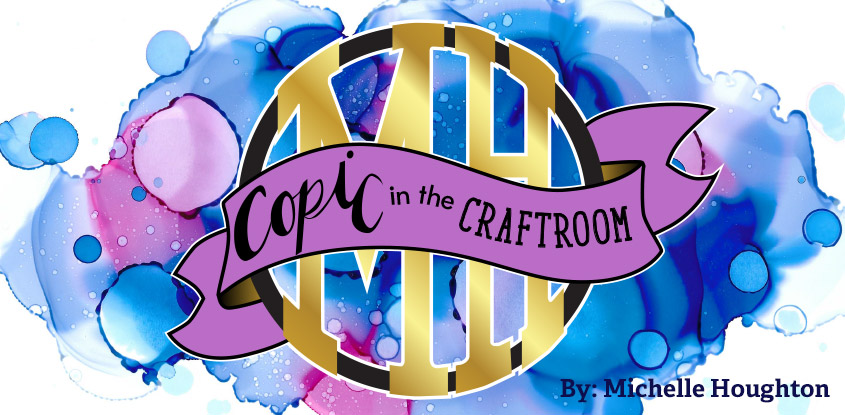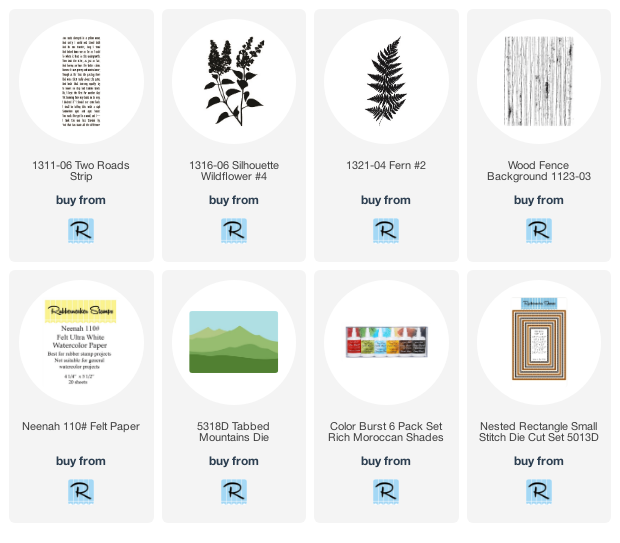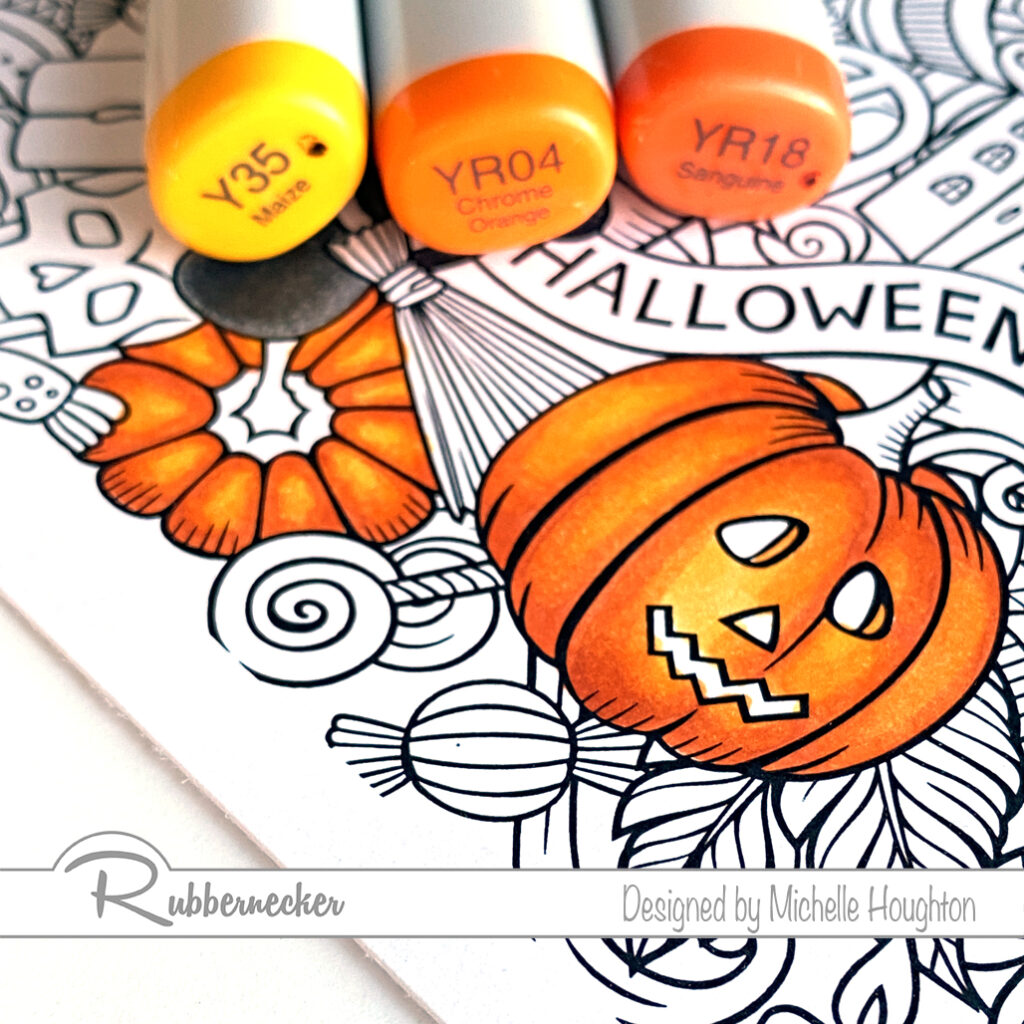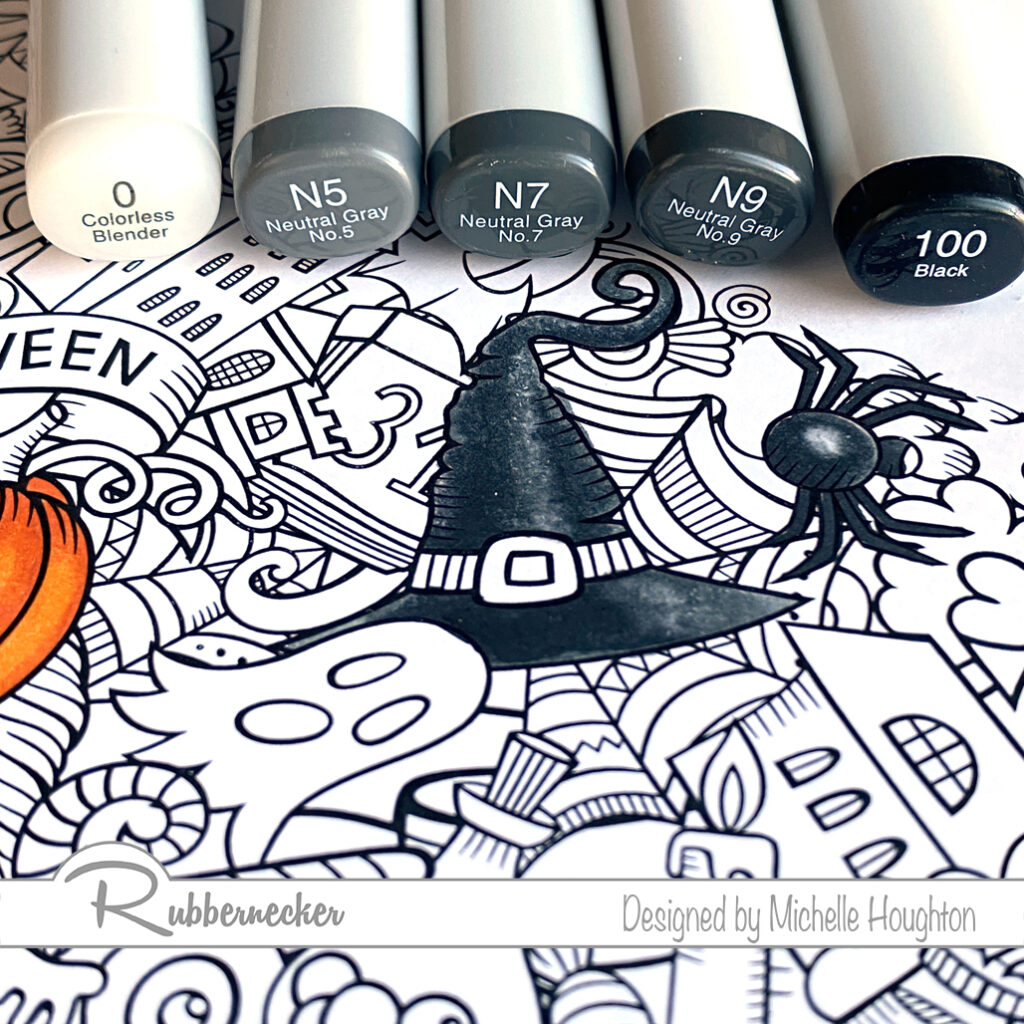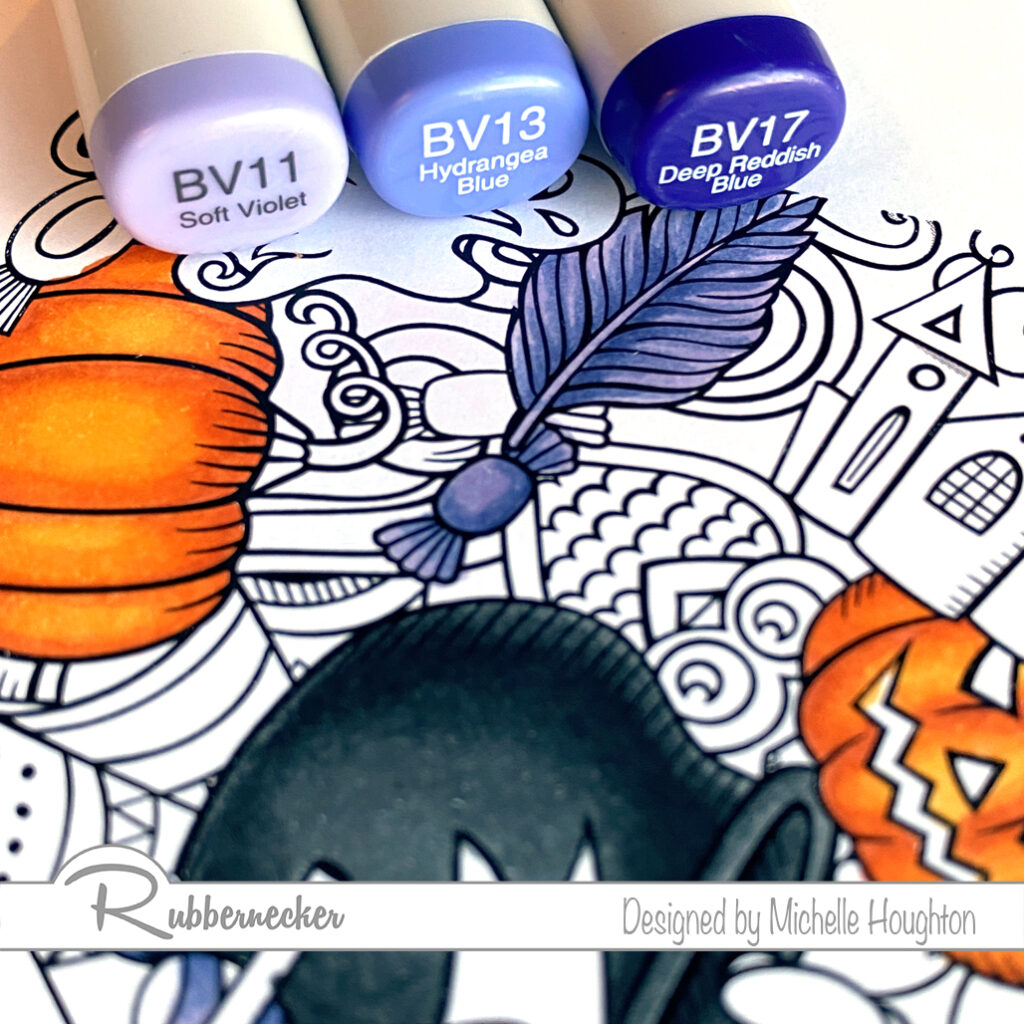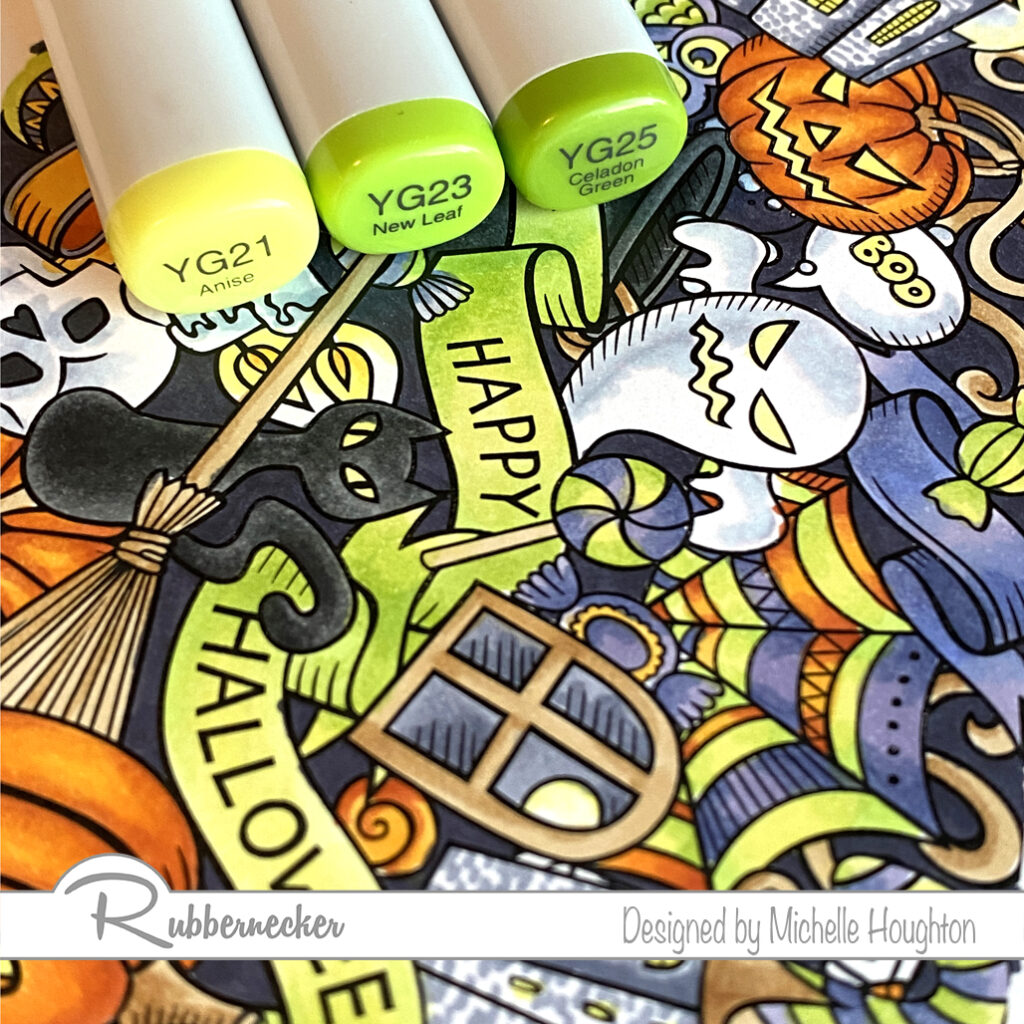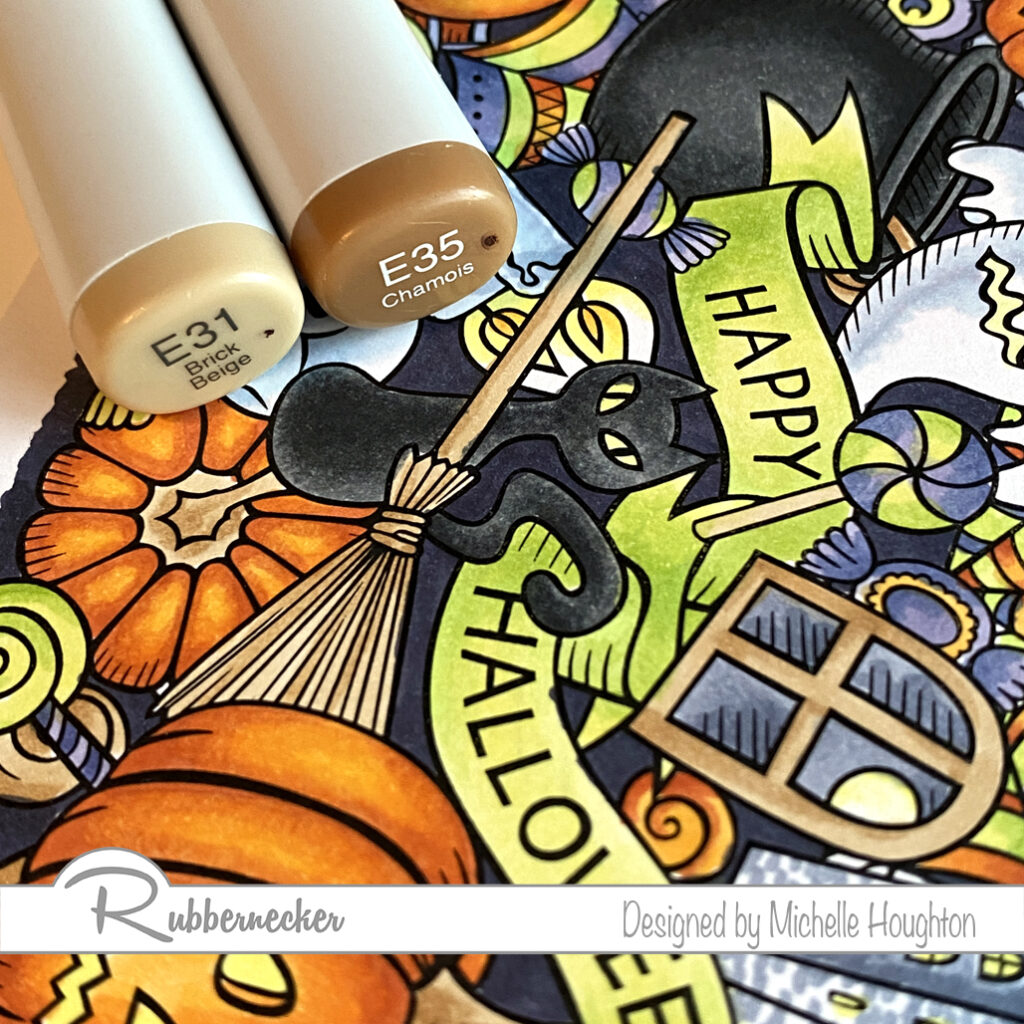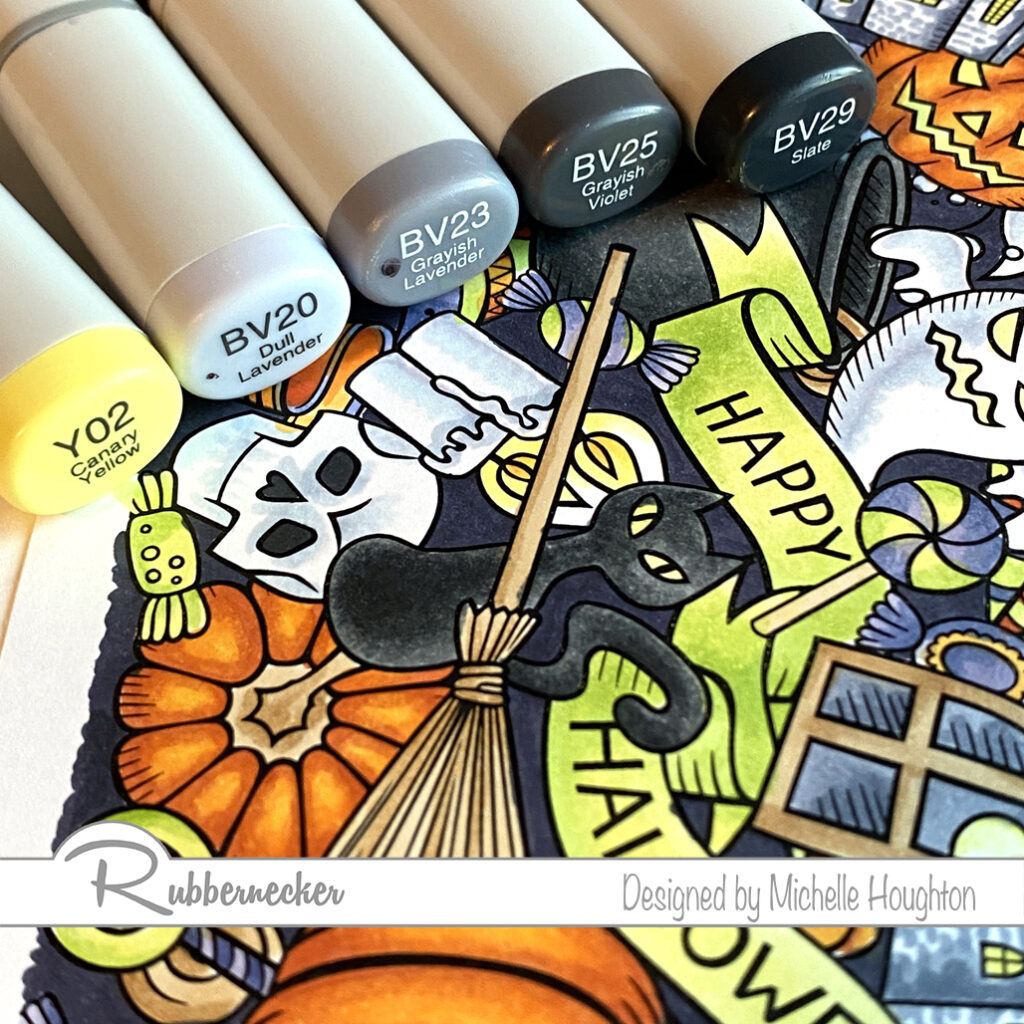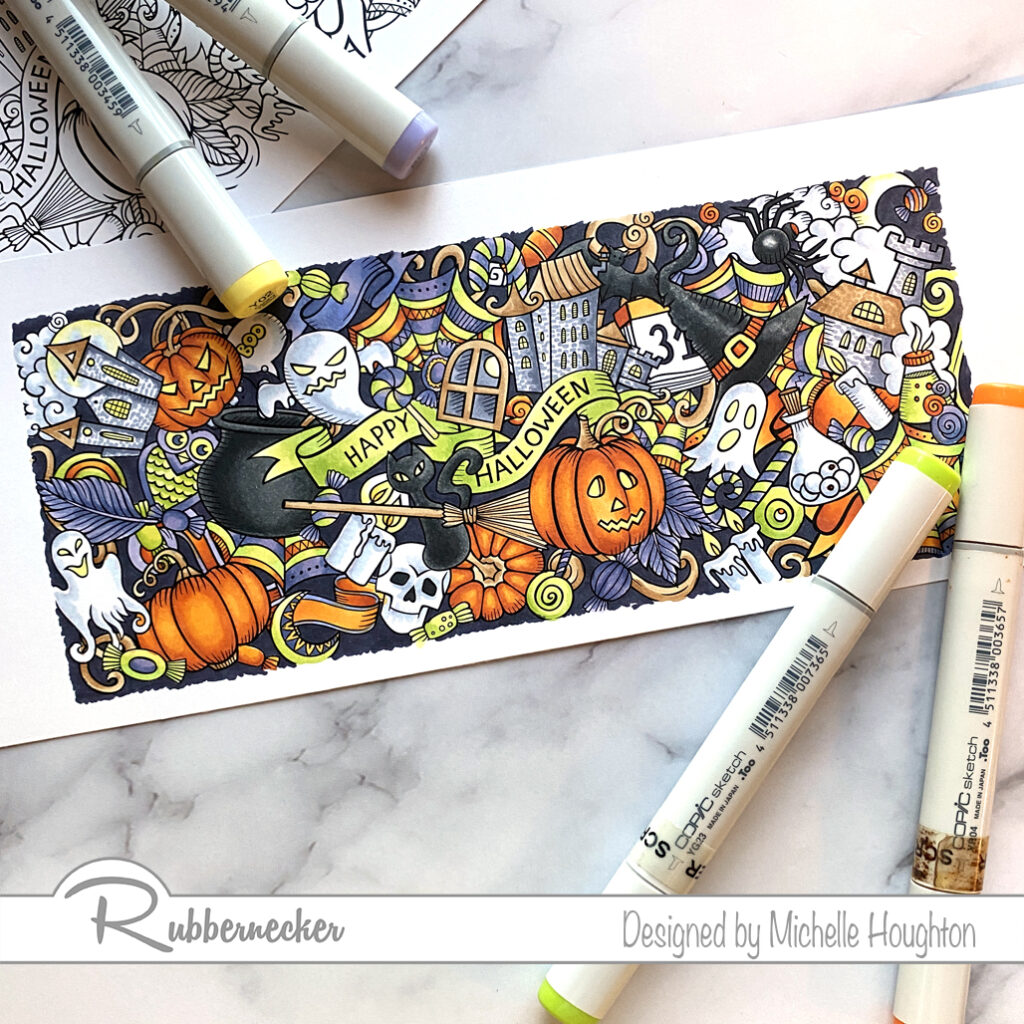We are celebrating Halloween for 13 days over on the Rubbernecker blog and I am up for day #1! I decided to play with Fall/Halloween colors. I have not had the opportunity to play with Color Burst before and decided this would be a super fun day to do it. I created three cards with Color Burst backgrounds, beautiful silhouette stamps from as well as dies and Neenah Felt Ultra White Paper all from Rubbernecker. Let’s take a look.
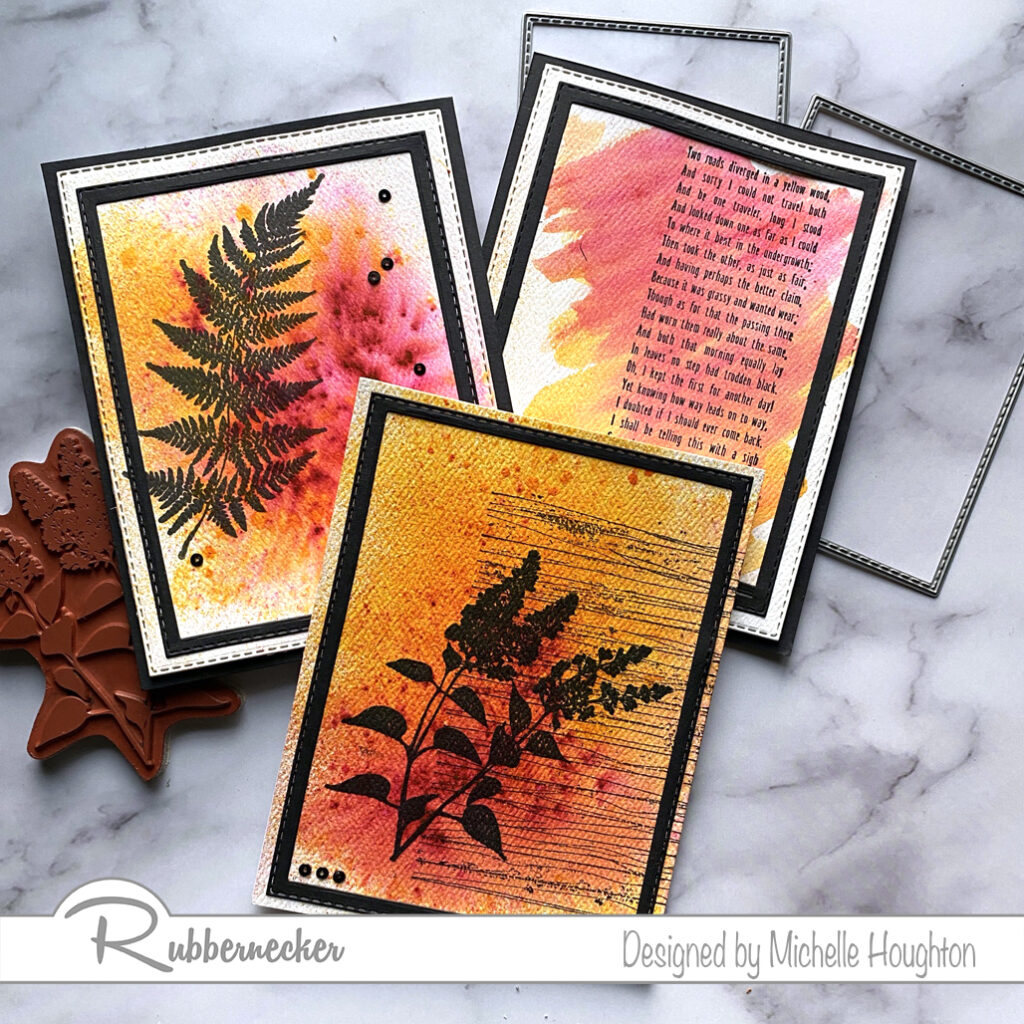
I tried three different techniques with the ColorBurst so let’s look at each card.
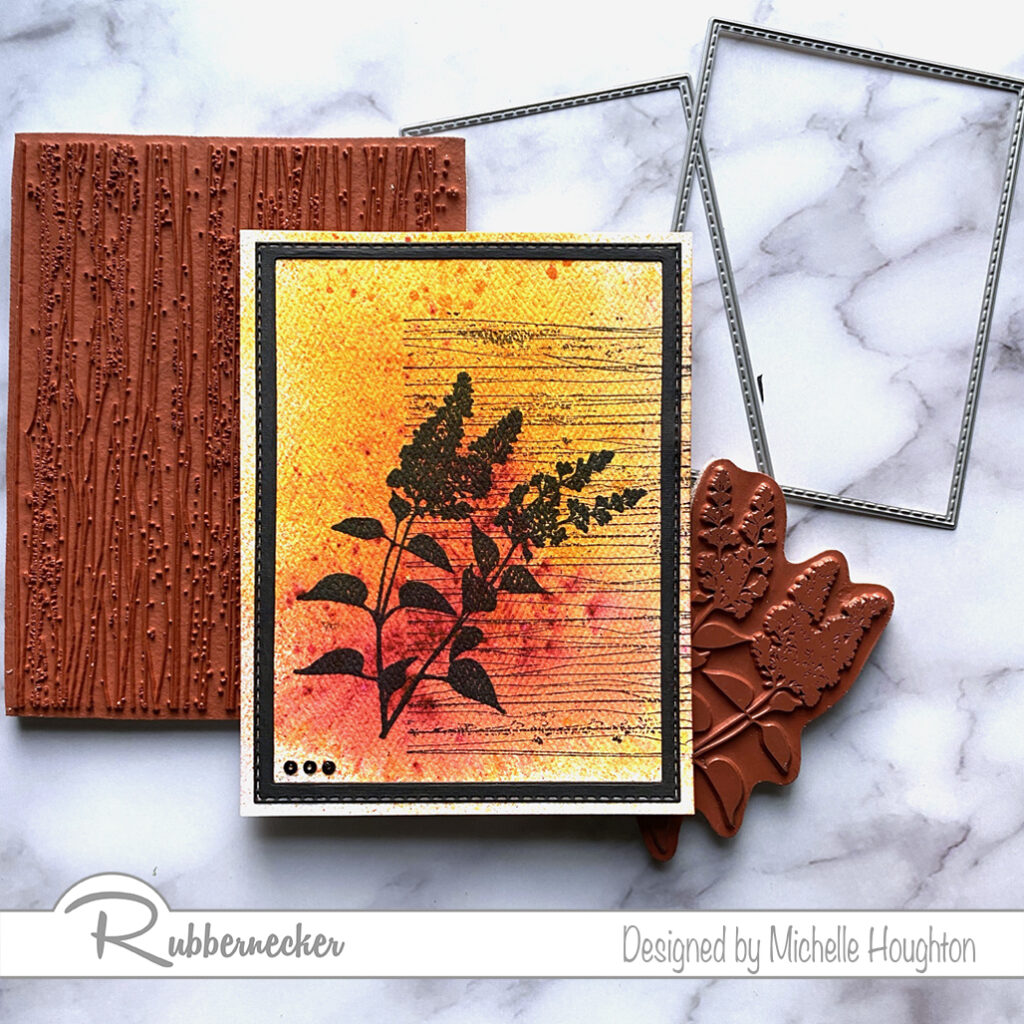
- Wet a sheet of Neenah Felt Ultra White paper with water. You can do this with a mister or paint brush.
- Shake small amounts of Color Burst onto the wet surface.
- Set the page aside to dry.
- Once dry, use a background stamp and silhouette stamp in black to create a dramatic image.
- Use nesting rectangle dies to create a black frame out of cardstock.
- Layer the card front, frame and a few black sequins or dots on a card front to finish.
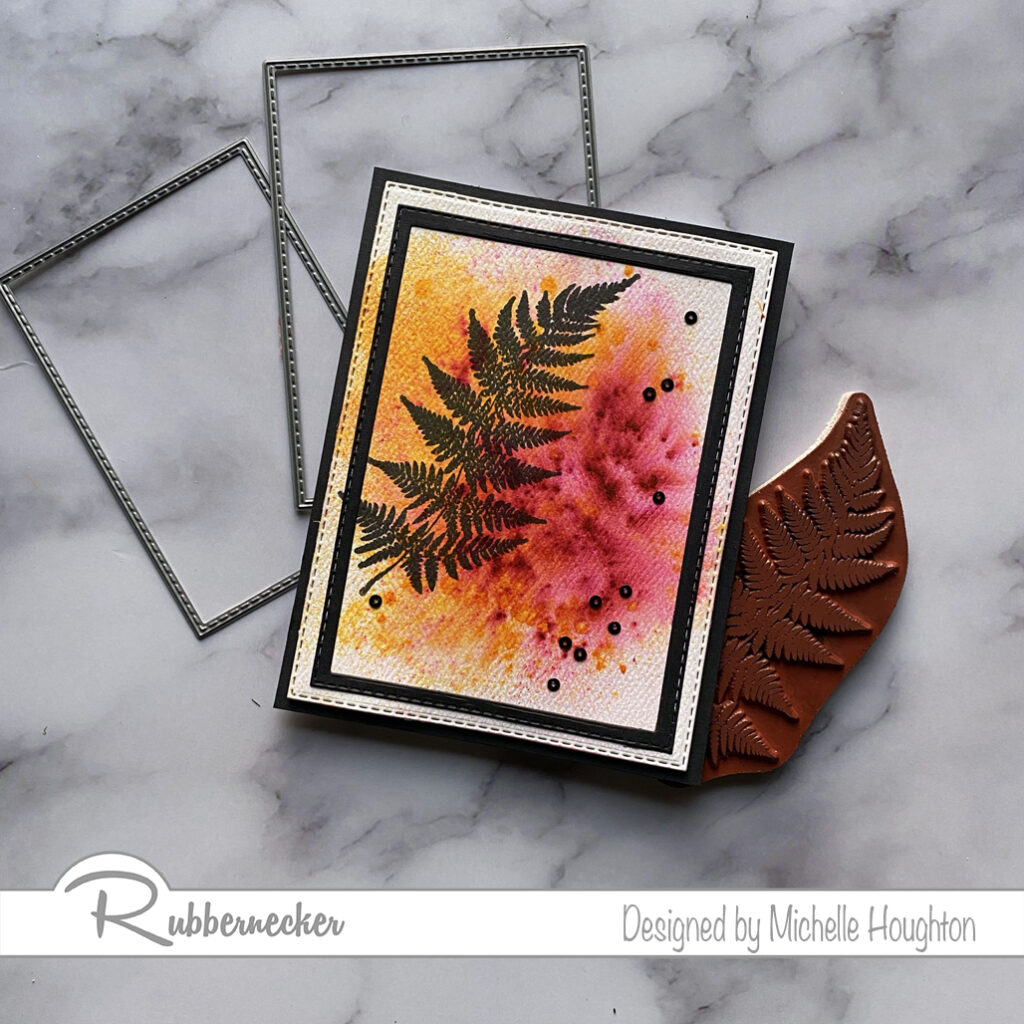
- Shake Color Burst directly onto a sheet of Neenah Felt Ultra White paper.
- Use a mister to spray water on top of the dry Color Burst.
- Set the sheet aside to dry.
- Once the page is dry use a silhouette stamp and black ink for a dramatic effect.
- Use rectangle nesting dies to trim down the Color Burst page and create a black cardstock frame.
- Layer a black card base, Color Burst background, black frame and black sequins or dots to finish the card.
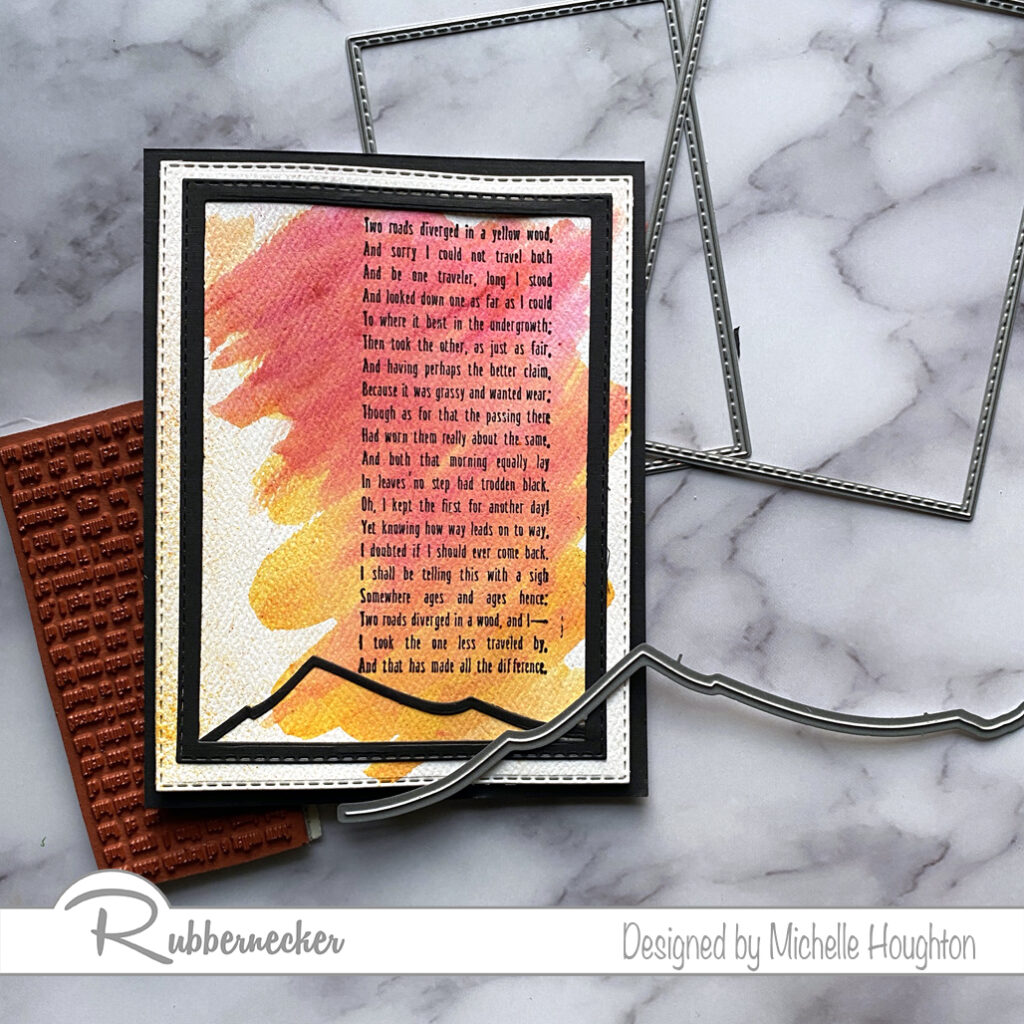
- Sprinkle dry Color Burst onto a sheet of Neenah Felt Ultra White paper.
- Use a wet paintbrush to lightly run over the Color Burst creating a watercolor background.
- Set the sheet aside to dry.
- Once the paper is dry use a stamp with a lower quote or a detailed background through the watercolor.
- Use a mountain die and cut a thin mountain outline by running it through your die cut machine twice.
- Use nested rectangle dies to trim the watercolor background and cut a black frame out of cardstock.
- Layer a black card base, the watercolor background, the slim mountain silhouette and a black frame.
Thank you so much for stopping by today and make sure to keep watching Rubbernecker for the next 12 days to see heaps of Halloween inspiration!
Have a Happy Colorful Day!

